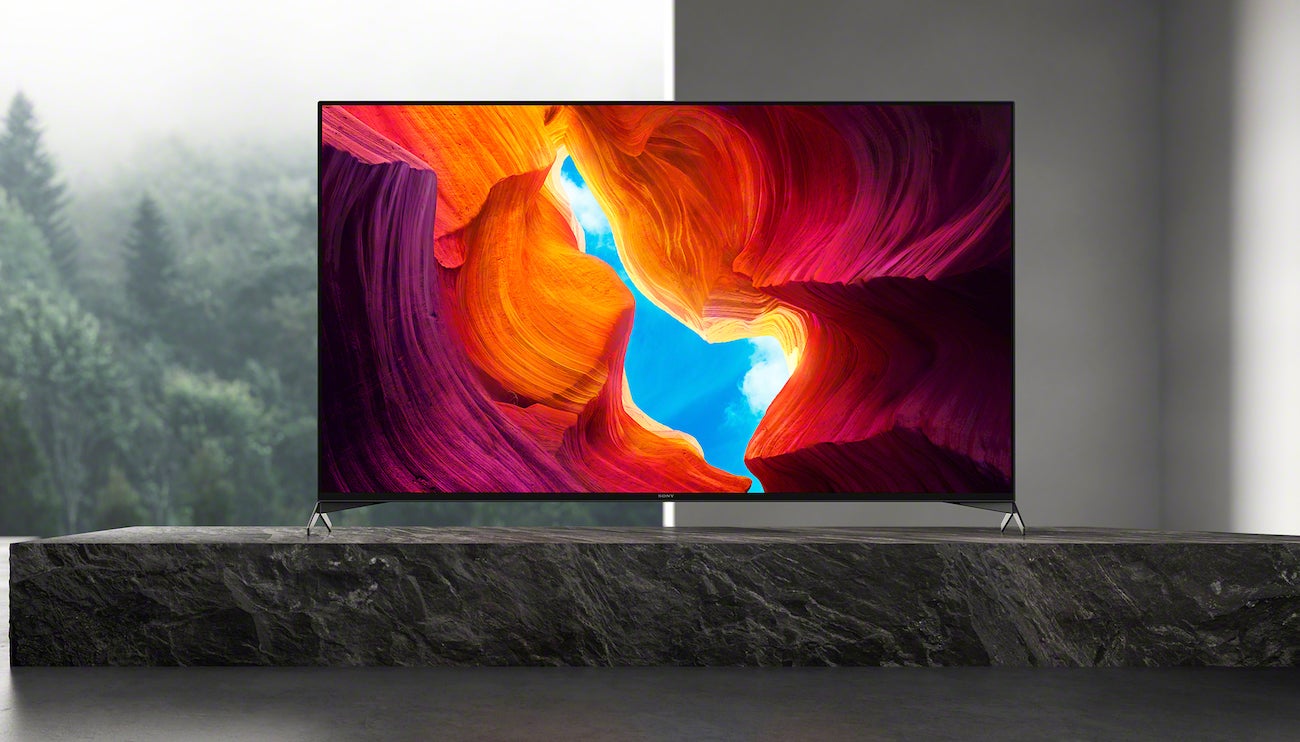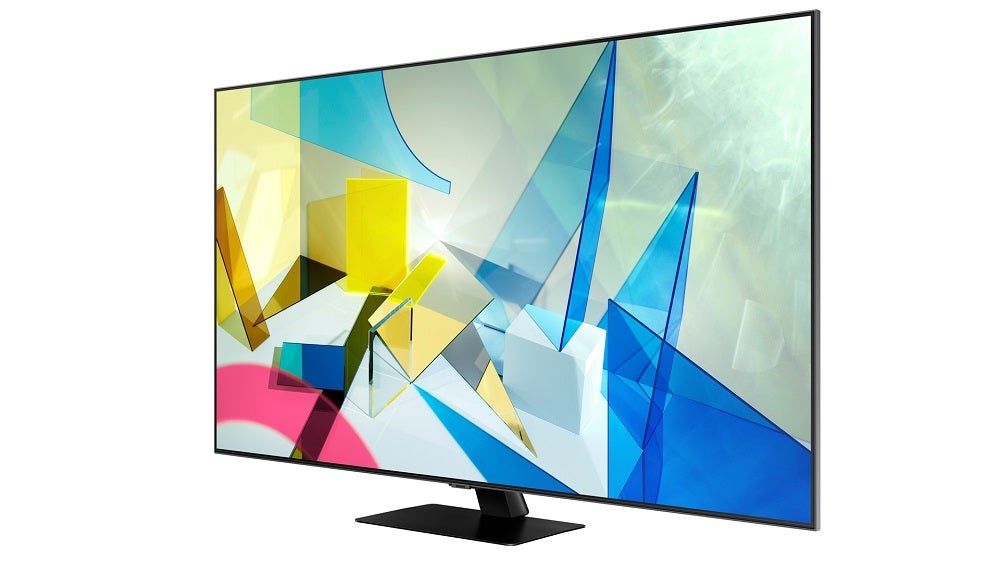Panasonic TX-65HX940 Review
Panasonic's premium edge-lit display is a solid option for films and sports
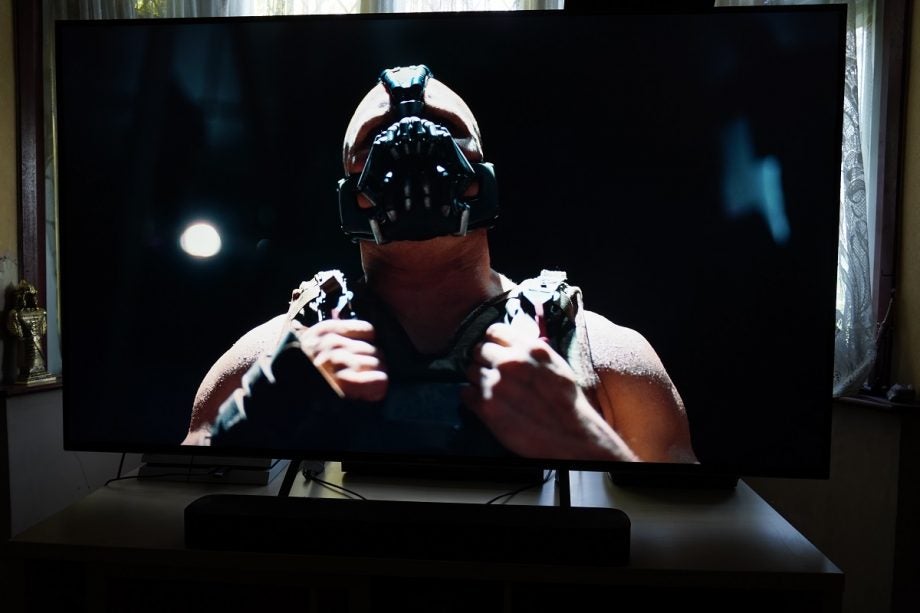

Verdict
Panasonic’s 2020 premium LED TV option offers natural, colourful picture performance and excellent motion processing, but its rivals outgun it for black-level performance smarts. Still, if you can find it for its current price of £999, this is a good big-screen display.
Pros
- Big screen display for three figure sum
- Multi-HDR support
- Solid design and adjustable feet
- Natural, colourful images
- Very good motion processing
Cons
- Rivals offer more comprehensive smarts
- Not the most consistent of black levels
- Lacks premium gaming features
Key Features
- Smart interfaceMy Home Screen 5.0 smart interface
- DisplayEdge-lit dimming, IPS screen
- HDRSupports HDR10, HLG, HDR10+, Dolby Vision formats
- ProcessorPowered by Panasonic’s HCX Pro Intelligent chip
Introduction
The Panasonic HX940 is the Japanese brand’s top-tier LED TV in its 2020 lineup, sitting beneath the premium OLEDs.
Given Panasonic’s OLEDs have been pretty impressive – we gave the HZ2000, HZ1500 and HZ1000 five stars each – expectations of similar excellence pervade with the HX940. It’s an edge-lit TV, so it’s potentially giving up performance to the FALD (full-array local dimming) Sony KD-65XH9505 and Samsung QE65Q80T displays, both of which serve as rivals – but unlike those TVs, it has in its pocket Dolby Vision and HDR10+ support.
Given the HX940 launched in 2020 for around £1699, it’s shedded £700 to make it an enticing prospect for those looking for a big-screen display under £1000 ahead of Panasonic’s 2021 range going on sale.
Availability
- UKRRP: £999
- EuropeRRP: €1599
At the time of review, the 65-inch Panasonic HX940 costs £999, down from around £1699 when it first went on sale. In Germany, where this TV is also on sale, it’s known as the Panasonic TX-65HXW944 and priced at €1599.
Design
- Neat and tidy
- Smart-looking set
- Adjustable feet
- Cable clutter solution
The HX940’s build quality continues the no-frills aesthetic of Panasonic’s 2020 TV range. This is very much form following function.
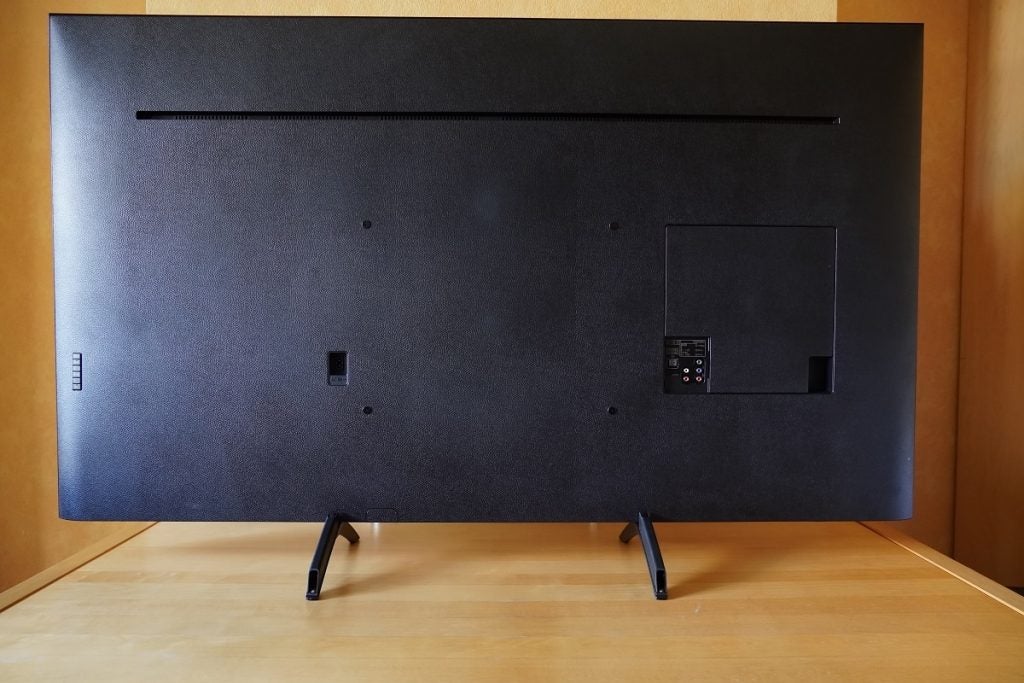
The HX940 comes in 75-, 65 and 43-inch sizes (Europe gets 55- and 49-inch models) and the build quality is as you’d expect from Panasonic: smart, tidy and professional. The rear panel has a faux-leather finish and the chassis itself is slim, which presents the option of wall-mounting.
The bezel that frames the screen has a nice brushed finish up-close, and fades from view when watching TV. The feet are interesting in that they a) have an area for slotting cables through to keep the rear of the TV tidy, and b) can be configured either out wide or in a narrow setup. You don’t get that with the 75-inch model, which comes with a central plinth.
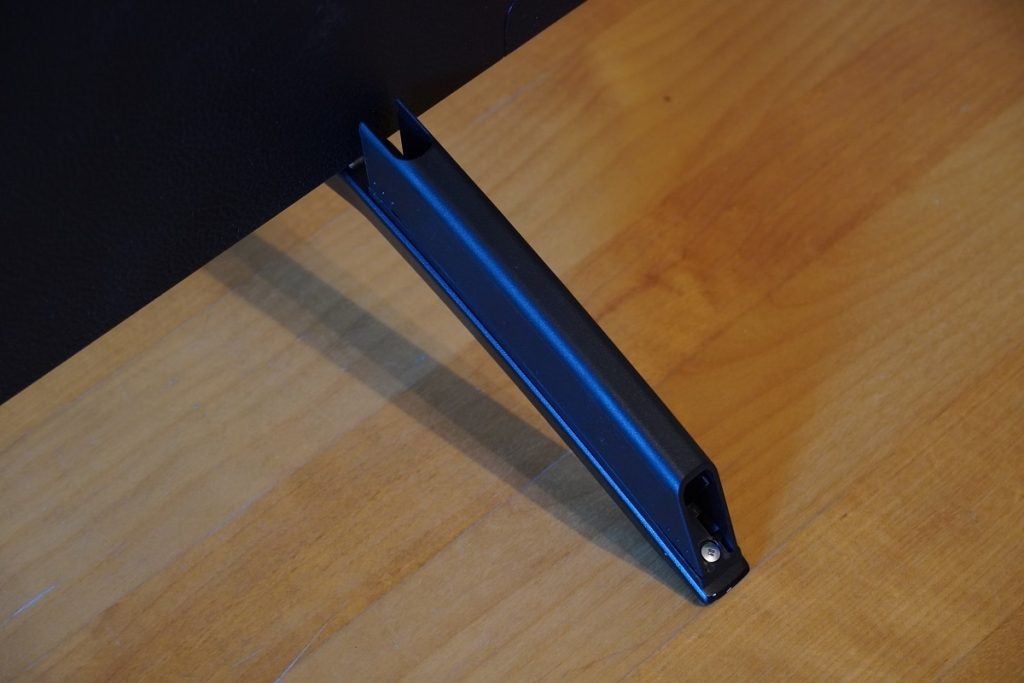
The remote is the same unit Panasonic has been including with its TVs for a while: a chunky, old-fashioned affair with hotkeys for Freeview Play and Netflix. I isn’t a chore to use (unlike some others) and button presses have a nice, cushioned feel. It’s well-laid out, easy-to-use, and in this respect you can’t fault it much.
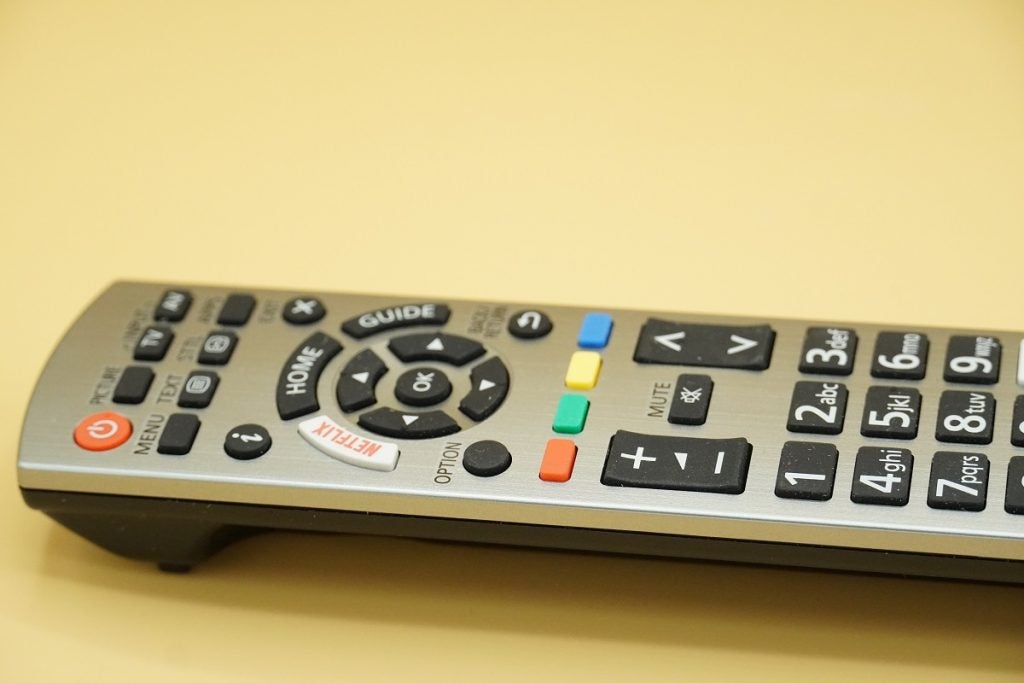
Features
- Lacks the ‘smarts’ of rivals
- Lacks advanced picture modes
- Shortage of streaming apps
- Easy-to-use smart interface
There are fewer picture modes on the HX940 compared to the OLEDs – there’s no Filmmaker mode or Netflix Calibrated mode, but I don’t think many will mourn their absence. The HX940 is a Netflix Recommended TV; so it fulfils the criteria of fast startup, easy access and optimised interface, and so on.
There’s no Intelligent Sensing, which OLEDs have to fine-tune the picture in bright and dark rooms. Panasonic’s 2020 range wasn’t one for gaming either, so there’s no Variable Refresh Rate (VRR) or High Frame Rate (HFR) functionality here.
Adding to the list of omissions, eARC is missing for passing high-quality soundtracks to a connected device. All that’s represented from the HDMI 2.1 spec is Auto Low Latency (ALLM). I measured latency at 14ms in Game mode, so it’s a capable performer in that respect.
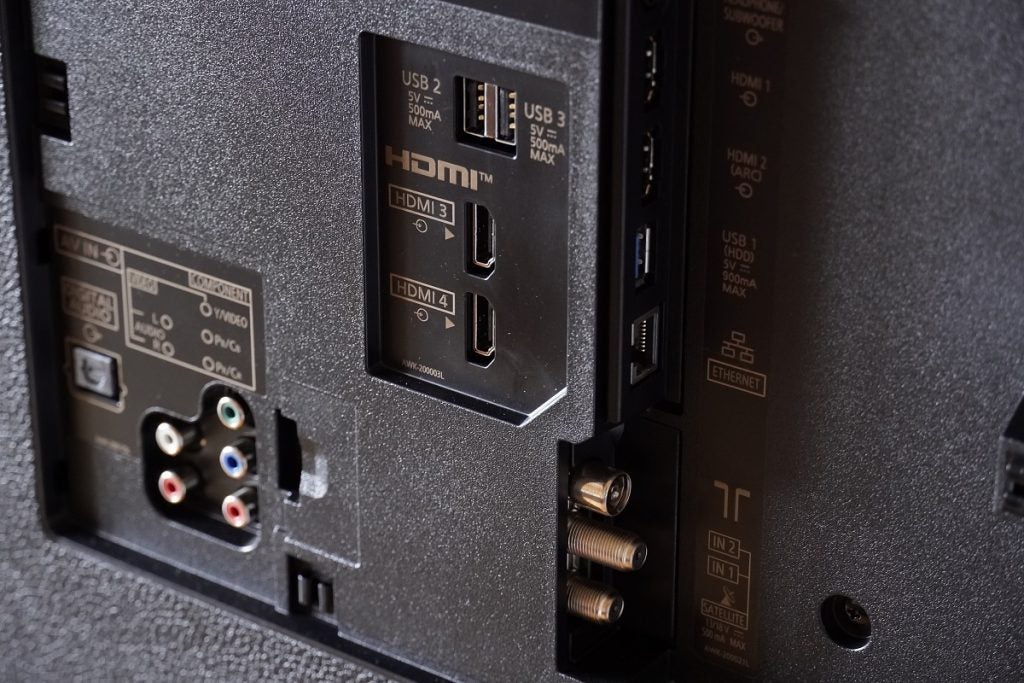
Connections stand at 4 x HDMI 2.0: 2 x USB 2.0 and a single 3.0 port, Ethernet, optical-out, 2 x CI+ 1.4 slot, component-in, satellite, aerial, 3.5mm output – all very standard. Wireless connectivity extends to Bluetooth 4.2, Wi-Fi and DLNA protocols, and the set supports Bluetooth Audio Link if the idea of private listening with a headphone interests.
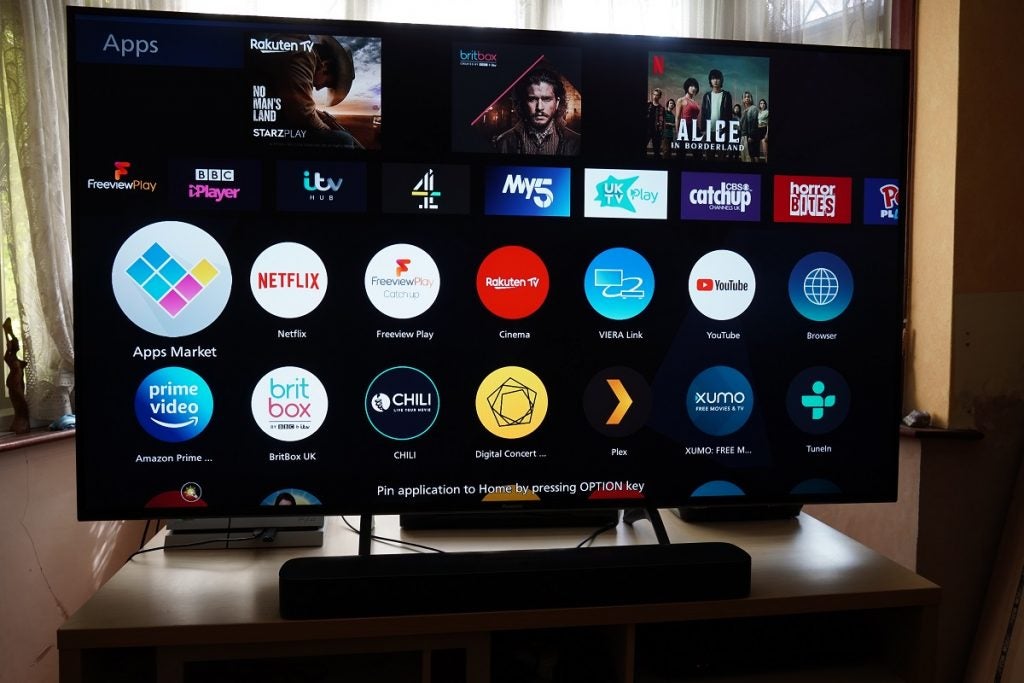
Panasonic’s My Home Screen 5.0 interface is simple to use, using roundels to highlight apps, plus you can customise shortcuts or arrange your favourite apps for quicker access. It’s lacking for sheer numbers: Samsung, LG and Android all outmatch Panasonic in that regard, since the HX940 is missing Apple TV, Disney+, Spotify, Tidal and Now among others. If, like me, you subscribe to those services then an additional streaming player is all but a must.
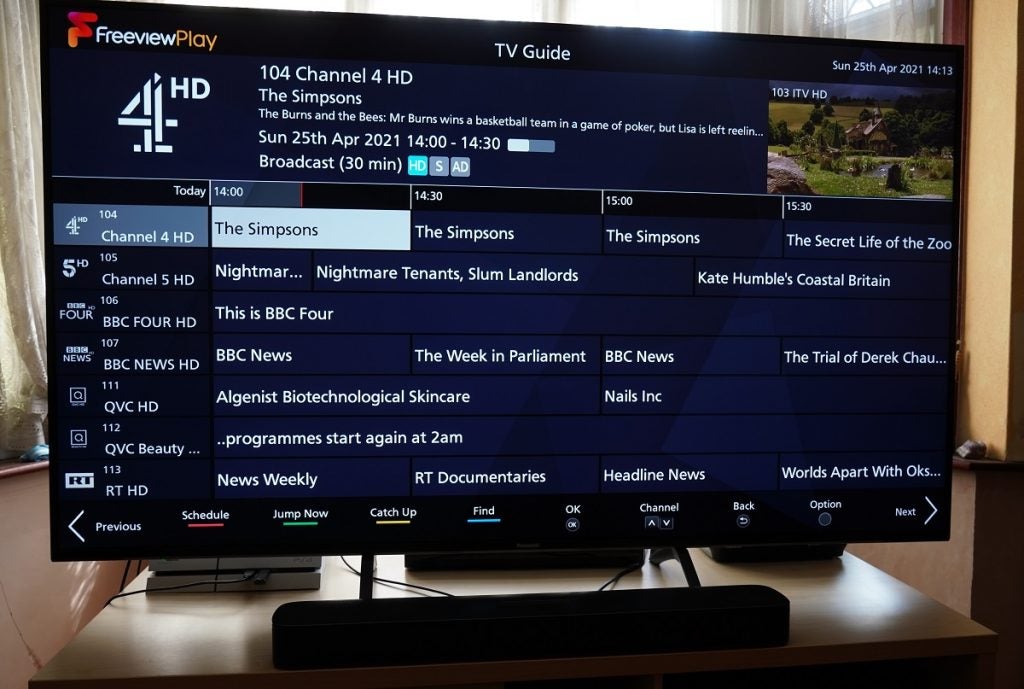
There is Freeview Play for access to UK catch-up apps in BBC iPlayer, All 4 and ITV Hub. Alexa and Google digital assistants are supported through an external device.
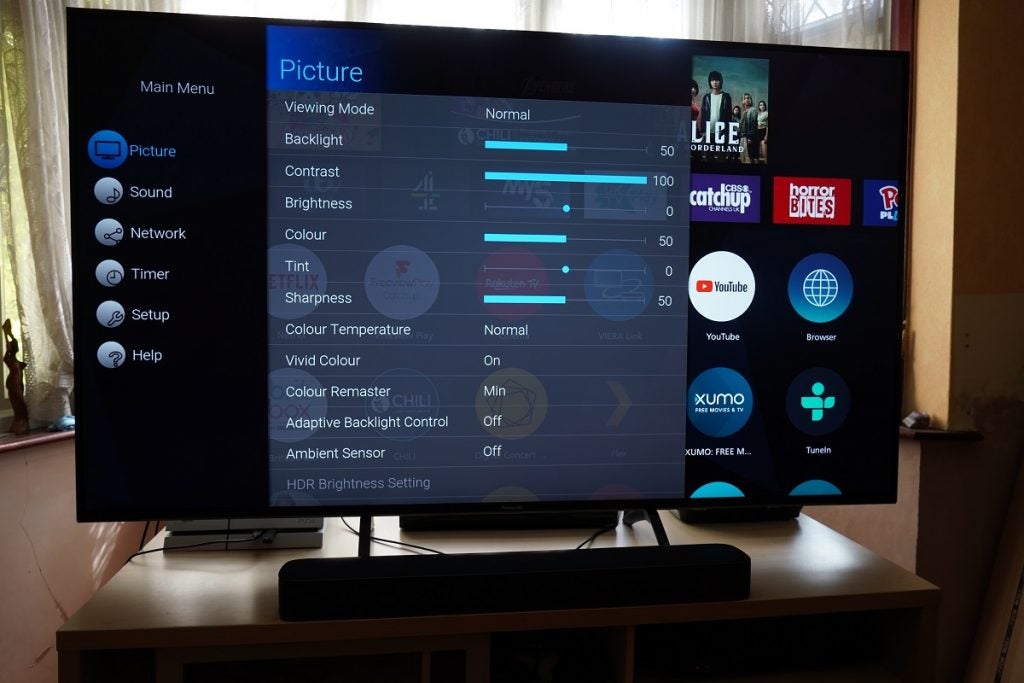
The Panasonic HX940 menu system is straightforward, but could use a refresh. I doubt you’ll encounter any problems getting to grips with what each setting means, so its simplicity can’t be understated.
Picture quality
- Colourful images, not-so-strong black levels
- Balanced, colourful and natural-looking images
- Very good motion processing
- Not the deepest black levels, especially with Dolby Vision content
Like the 65HZ1000, the HX940’s picture is powered by Panasonic’s HCX Pro Intelligent processor, which has received input from Hollywood colourist Stefan Sonnenfeld. Of course, the images are being fed to the HX940’s HDR Cinema Display Pro LED, not a Master HDR OLED panel.
Starting with SDR sources, the HX940’s upscaling displays a little softness with faces compared to what I’ve seen on other 65-inch TVs. However, Full HD content boasts strong, natural and convincing colours, with people and objects sharply drawn, and images full of detail and clarity. Skin tones – as they are across all resolutions – are varied, tonally expressive and naturally conveyed.
SD SDR – – – – – – – – – – – – – – – – – – – – – – – – – – – – – – – HD SDR


A switch to a BBC nature documentary and the HX940 wrings out the strands of fur on the back and neck of a cheetah in impressive fashion.
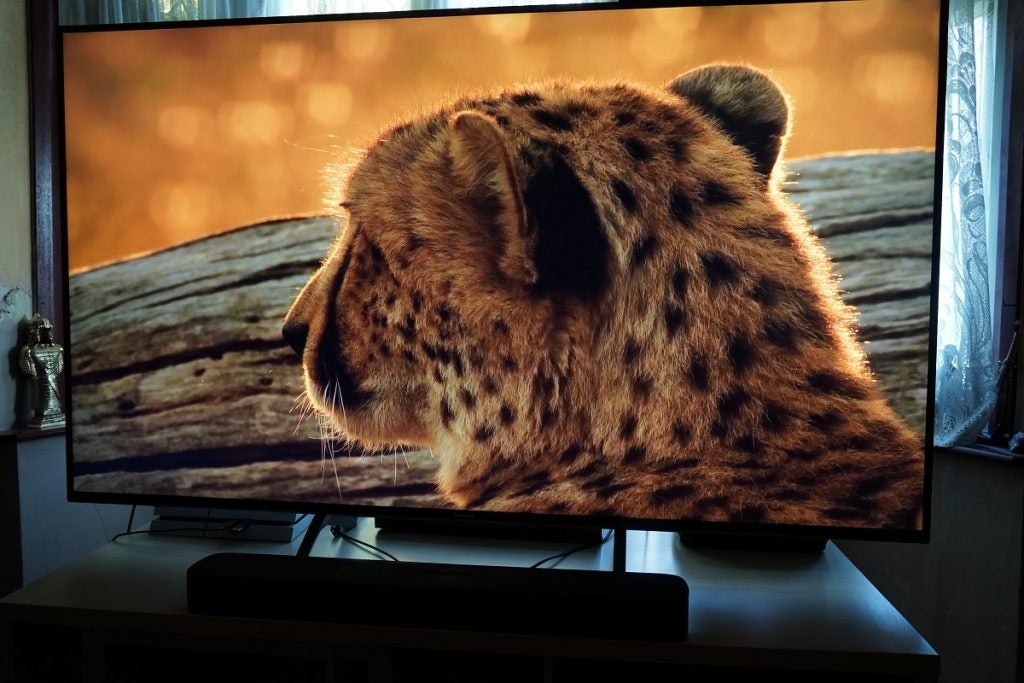
SD obviously drops in quality but holds up well, despite the reduction in fine detail and a lack of sharpness. Faces are softer and noisier – again, not unexpected – but colours are consistent with HD sources, and complexions are accurate, unlike some cheaper 4K TVs I’ve tested in recent times.
A jump to the Now streaming service with Killjoys in 720p, and the HX940 makes a good fist of dealing with the lower-quality source. Close-ups of faces provide very good levels of fine detail with stubble, lips, facial features and wrinkles on the performers revealed with impressive clarity.
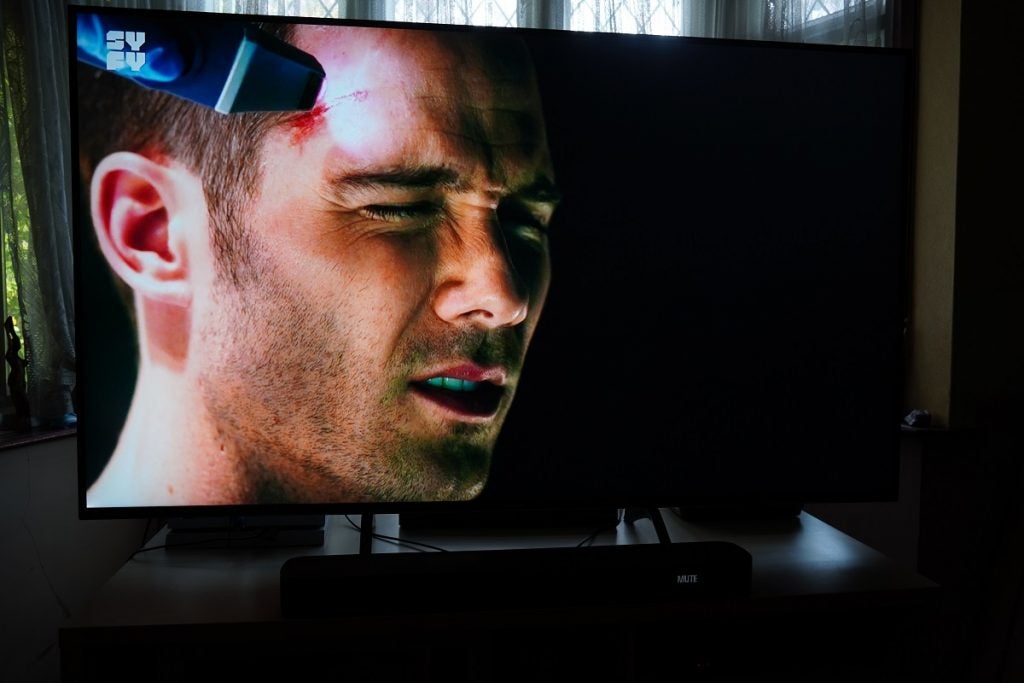
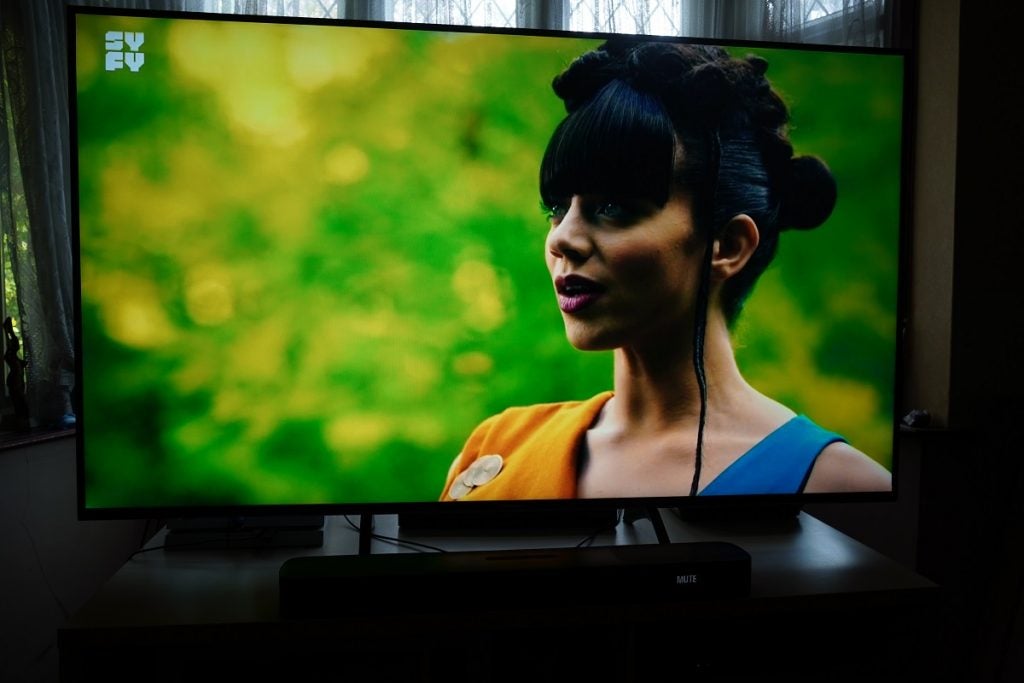
Given the colourful nature of the show, the TX-65HX940 also handles the palette with a vibrancy and punchiness. The Dynamic Range Remaster setting gives the show more of an ‘HDR’ feel with light sources brightened, but it’s a subtle effect.
Panasonic’s motion handling is one of the best, with the TX-65HX940’s Intelligent Frame Creation (IFC) adding individual frames to reduce motion blur. Options are Off, Min, Mid, Max and Custom – the last offering finer control over blur reduction and smoothness.
Set to Max and lower-quality content (480p, 720p) exhibits some blur, but has the added effect of looking slicker. With it off, there’s a flicker to some broadcasts/services that made me jump back in the arms of the set’s motion processing.

Used with 1917 (4K Blu-ray), the HX940’s motion continues to be a polished effort. At Max there’s an element of judder, with the piece of paper Lance Corporal Blake handles in his hand. Set it down to Mid and the judder is slighter – almost imperceptible – while the Min option settles between smoothness and film-like flicker that avoids judder altogether.
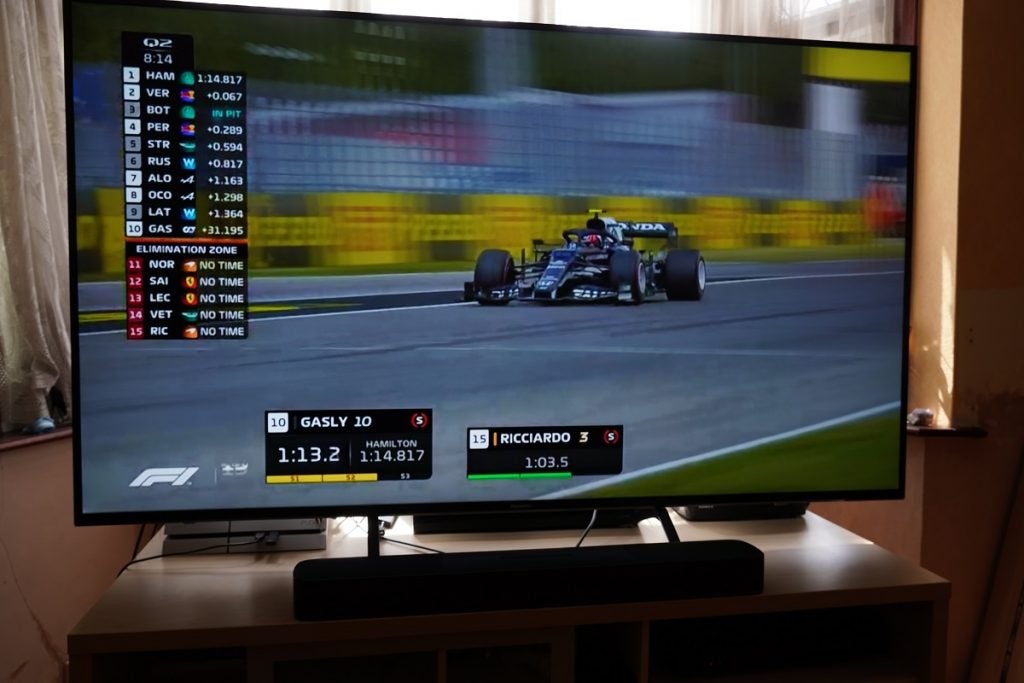
This is the option I’d settle for with films, sports and motorsports. In any case, the HX940’s motion processing is smooth, slick and avoids that hyper-real ‘soap opera’ effect.
The HX940 supports HDR10, HLG Broadcast, Dolby Vision and HDR10+. There’s no Dolby Vision IQ to tailor DV content to bright and dark rooms (you get the Bright, Dark and Vivid Dolby Vision profiles instead). HDR10+ Adaptive hasn’t been added, but will be available on the JX940, which will replace the HX940 later in 2021.
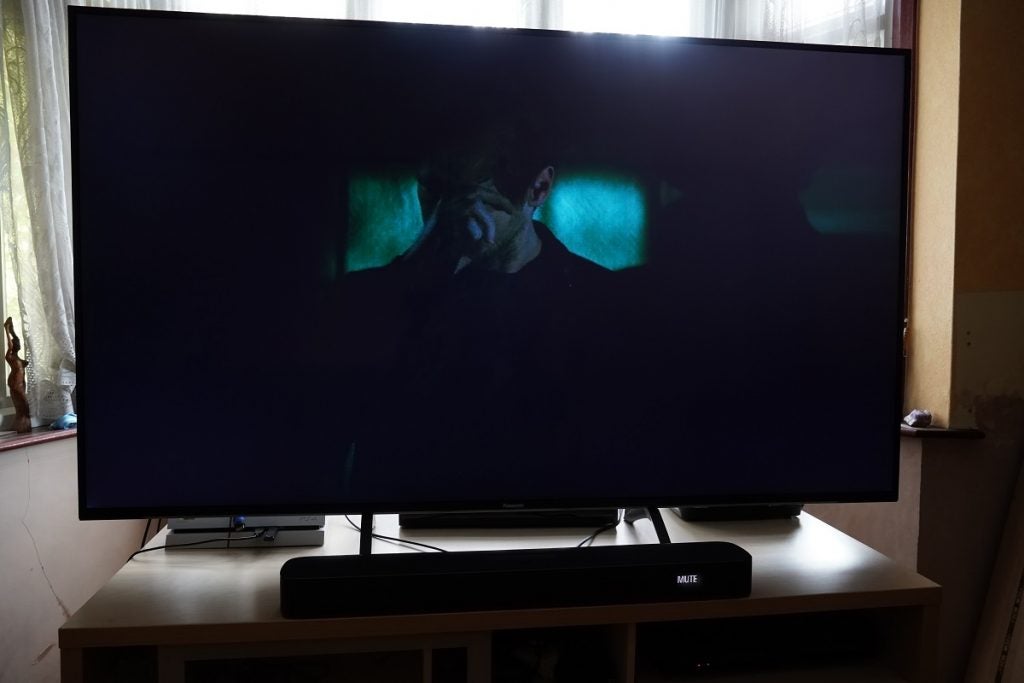
With HDR content, the 65-inch set appears to have an issue with very dark scenes. Watching a Jessica Jones’ episode (A.K.A. Hellcat) on Netflix in Dolby Vision, there was a lack of shape and depth to really dark scenes. Blacks are rather formless and shallow, the HX940’s edge-lit dimming system not producing black levels as strongly as you’d find on a FALD display or OLED.
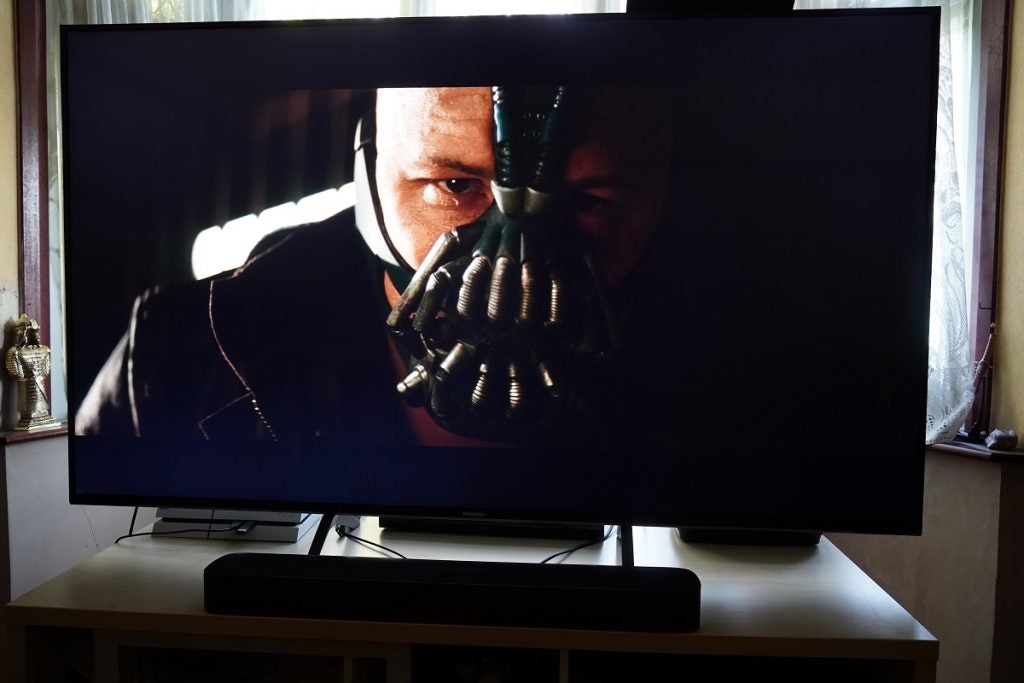
There’s some backlight bleed in the corners and black borders, popping up during HDR10 playback (The Dark Knight Rises), HDR10+ (Doctor Sleep) – but it’s most noticeable with the Dolby Vision Bright profile with streaming content (Ted Lasso, Jessica Jones, Prometheus).

None of the Dolby Vision profiles that ship with the Panasonic HX940 hit the spot either. The Dark profile produces better blacks but at the expense of brightness and dark detail, while the Bright profile ups the brightness but black levels aren’t as strong. The Dolby Vision Vivid profile continues to be peculiar, giving content an almost electric-blue tone at odds with colour accuracy and luminance of the HDR format.
HDR10+ – – – – – – – – – – – – – – – – – – – – – – – – Dolby Vision Bright

Dolby Vision Dark – – – – – – – – – – – – – – – – – – – – – Dolby Vision Vivid

Still, the set’s out-of-the-box 4K HDR performance is an enjoyable one. Spike Lee’s Do The Right Thing is given an expressive and filmic look – especially with the True Cinema picture mode that gives everything a slight golden tone. Primary colours presented with a vibrancy and earthiness, while skin tones of the mostly black cast are varied and natural in tone, the Panasonic capturing the sizzling feel of late 80’s Brooklyn.
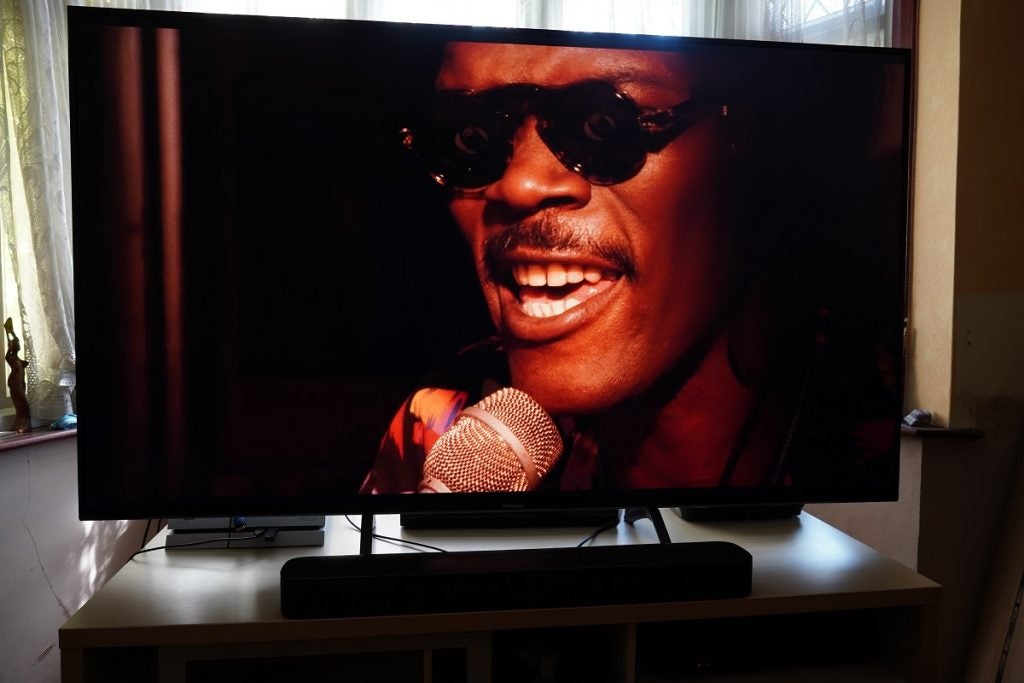
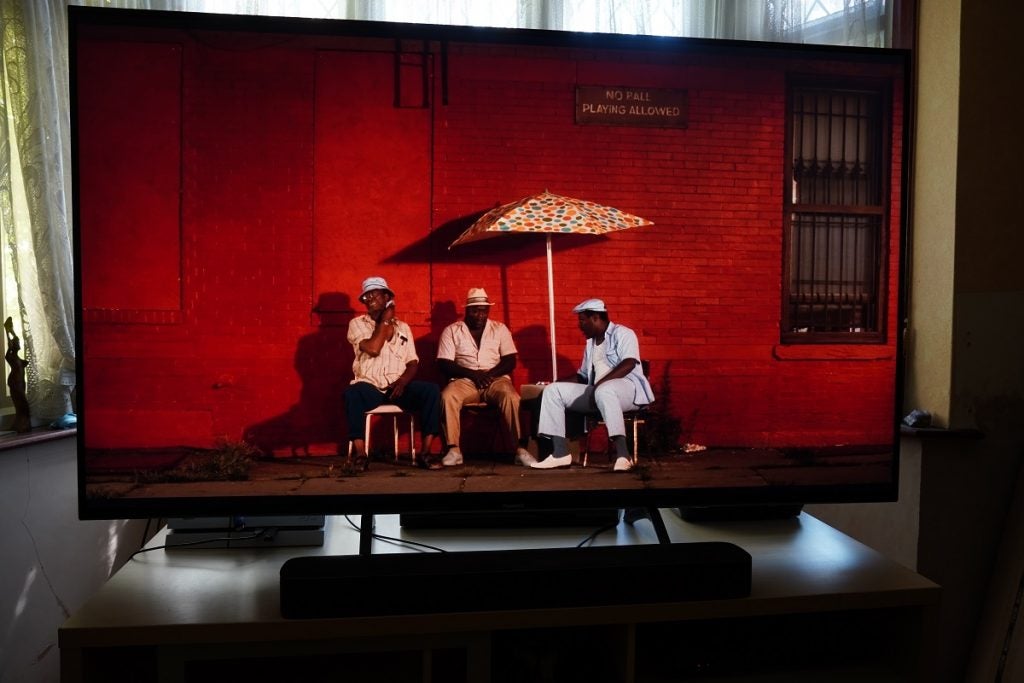
The same feeling applies to Moana (4K Blu-ray), which feels even more spectacular. Detail levels are huge (just look at the sand when Moana crash lands on an island), while the hues of the colours in the sky and sea are beautifully reproduced and dark scenes fare better.
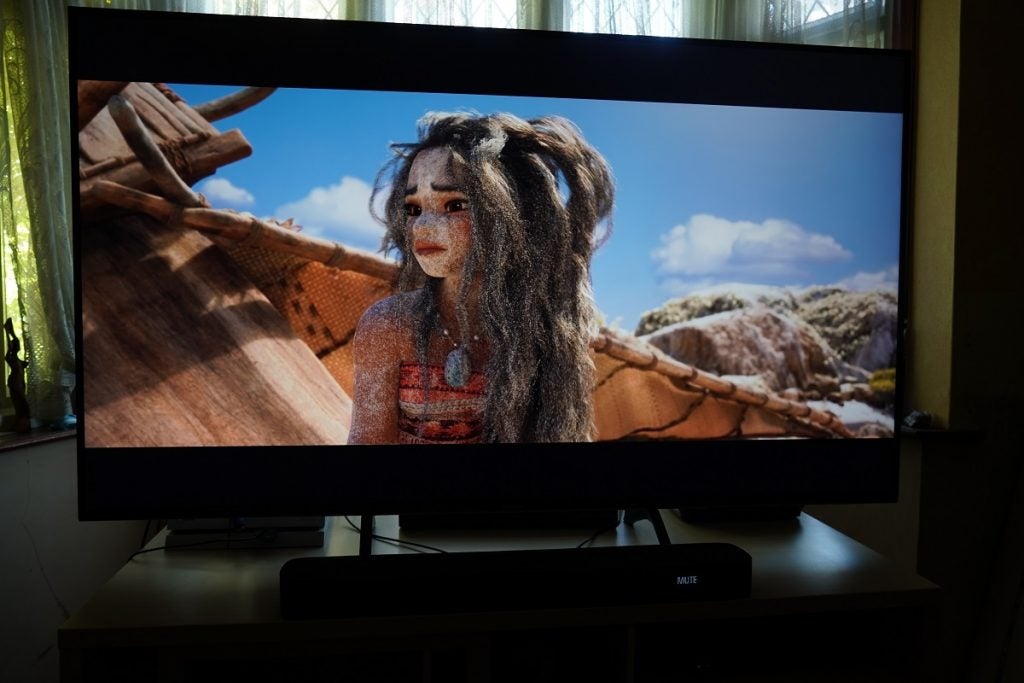
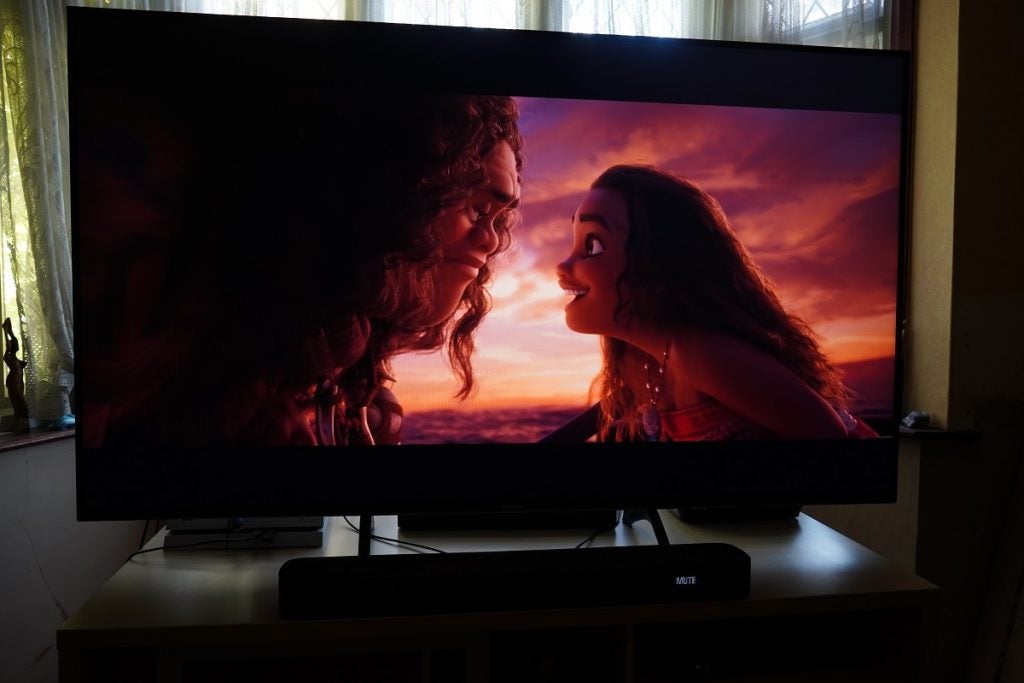
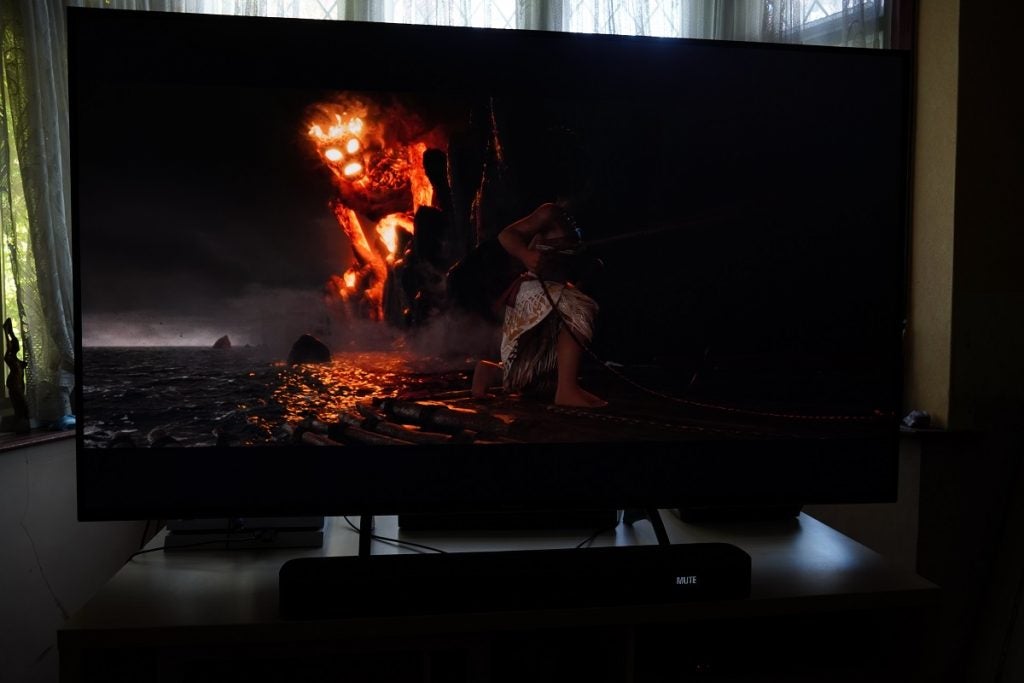
Angles are also fairly wide with colours strong, even though the backlight bleed gives blacks a bluish tone. There’s the mildest of blooming at wider angles – more noticeable with bright elements near the black bars, and that along with the general black-level performance makes the Panasonic HX940’s talents suited to bright rooms over dark ones, especially with Dolby Vision content.
Sound quality
- Decent dynamism and detail
- Diminished bass
Given the size of the screen, you would want to pair an external sound system with the Panasonic TX-65HX940. If you were to rely purely on the set’s two 10W speakers, then the sound the HX940 outputs is big (given the size) and detailed enough that you won’t miss much watching daytime TV.
There’s good definition to high frequencies, too, plus decent dynamics (depending on the content), and it does this without sounding harsh or muddled. Bass is where the HX940 unsurprisingly gives up performance, even to a compact soundbar. On its own it’s not half bad, but a screen this big warrants nothing less than an external sound system.
Conclusion
Given the drop in price to less than £1000, this 65-inch Panasonic has become a very appealing option for anyone looking for a big-screen TV for less than four figures. Picture quality is consistently natural and colourful across all sources, though black levels aren’t as strong as what you’d find on a FALD display.
Though it supports Dolby Vision HDR and HDR10+, as a premium entertainment hub it lacks the smart features on equivalent LG, Samsung and Sony sets. So this Panasonic 65-inch set is good, very good at times, but as an all-round performer the Samsung Q80T and Sony XH95 beat it.
Should you buy it?
You want a 65-inch set for three figures: If you look around, the 65-inch model can be had for less than £1000. That’s pretty good considering it was around the £2000 mark at launch. The picture quality here is more refined than that you’d get from the similarly priced Hisense 65U8Q.
You watch TV in a dark room: The black levels on the HX940 are not as strong as what you’d find on similarly priced full array local dimming sets from Samsung and Sony. Blacks become blu-ish in tone at wider angles and the Panasonic struggles with dark scenes, especially with Dolby Vision content.
Verdict
Panasonic’s 2020 premium LED TV puts in, at times, a very good picture performance that makes it a good choice for films and sports. It’s beaten by its rivals in terms of smarts and features, and the edge-lit display isn’t the most consistent for black levels, especially with Dolby Vision streaming content.
Best Offers
Availability
- UKRRP: £999
- EuropeRRP: €1599
FAQs
The HX940 uses an edge-lit IPS display, which means its dimming system is positioned towards the outer edges of the screen (that helps to keep the TV slender in terms of thickness) and the IPS screen helps the set produce a wide range of colours.

